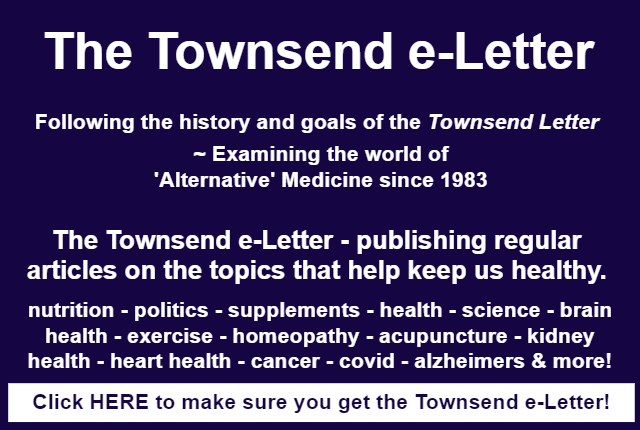An Editorial
Alan R. Gaby, MD
“I’ll know my song well before I start singing.” Those words were written by Bob Dylan, at the end of one of his most famous songs, “A Hard Rain’s A-Gonna Fall.” Bob Dylan, the only songwriter in history to win the Nobel Prize in literature. I was 15 years old when I first heard that song, and those words have stayed with me ever since.
A recent correspondence I had with a medical researcher reminded me of the importance of knowing one’s song well before singing it. While perusing the recent medical literature for new articles of interest, I came across a paper that examined whether zinc supplementation could improve glucose homeostasis in people with prediabetes. In that study, 98 Australian adults (aged 40-70 years) with prediabetes (defined as a hemoglobin A1c level of 5.7-6.4%) were randomly assigned to receive, in double-blind fashion, 30 mg per day of zinc or placebo for 12 months. After 12 months, compared with placebo, zinc supplementation had no significant effect on mean values for hemoglobin A1c, fasting blood glucose, or insulin resistance.1
I was concerned that this study had a potentially important flaw, so I sent an email to one of the authors of the study. The email read in part:
Thank you for your contribution to the zinc/diabetes literature. My concern with the study is that it does not consider the possibility that zinc is beneficial, but that zinc-induced copper deficiency could negate the potential beneficial effect of zinc. One wonders whether a better outcome would be achieved by comparing the combination of 30 mg per day of zinc and 2 mg per day of copper with a placebo.
To support my comments, I cited the following evidence.
Rats fed a copper-deficient diet had impaired glucose tolerance2,3 and elevated levels of glycated hemoglobin.4 Two healthy male volunteers participating in a copper-depletion experiment had decreased glucose tolerance after consuming a diet containing 0.78 mg per day of copper for 90-120 days. Glucose tolerance improved after copper repletion (6 mg per day) and was, in fact, somewhat better than before the depletion experiment, suggesting that pre-study copper status was low.5
The copper content of many Western diets may be even lower than the 0.78 mg per day used in the depletion experiment. Mean daily copper intake by high school and college women was only 0.5 mg per day,6 and the mean copper content of hospital diets was 0.76 mg per day.7 Other studies found slightly higher amounts of copper in typical Western diets: a mean of 1.01 mg per day (range, 0.58-2.03 mg per day) in one study,8 and a mean of 1.27 mg per day in another study.9
In healthy males, administration of 25 mg of zinc twice a day for six weeks resulted in a reduction in erythrocyte Zn-Cu superoxide dismutase activity, which may indicate mild copper deficiency.10 In healthy men, increasing zinc intake to 18.5 mg per day from a lower level of intake resulted in an increase in fecal copper excretion and a reduction in copper retention.11
The study author replied to my email:
Thanks for this information. It is an interesting point which we were not aware of. It may be part of the story but perhaps not the entire answer, given that a similar randomized clinical trial run in Sri Lanka (by our colleagues who collaborated on our paper) using the same dose of zinc showed a marked beneficial effect (with no copper supplementation). Is there a reason why that might be?
After finding some information about the typical diet in Sri Lanka, I wrote back to the author:
Thank you for your reply. I can only speculate about why different results were obtained in Australia and Sri Lanka. In searching the Internet, I see that some of the dietary staples in Sri Lanka are cashews, coconut milk, and red rice. One ounce of cashews contains 622 µg of copper (which is a lot) and one cup of coconut milk contains 32% of the recommended daily intake of copper. I could not find the copper content of red rice, but red rice is apparently similar to brown rice, which contains a lot more copper than white rice. Based on this limited analysis, it would seem that Sri Lankans have abundant copper status, and are therefore less susceptible than other populations to zinc-induced copper deficiency. I also found a paper showing that zinc deficiency is quite common in Sri Lankan children, although I did not find any data for adults. Suboptimal zinc status also appears to be common in Australia, although the data are limited.
To which the author replied: “Thanks, Alan. It’s a shame we don’t have the money to run another randomized clinical trial to test the combination of zinc and copper. Perhaps work for someone else to do.”
So, here we have a situation in which a study that was developed to answer a specific question may not have provided a clear answer to that question because the researchers were not aware of a potential problem with their study design. There are many other examples of how a better study design might have produced more useful data, although a detailed discussion of that point is beyond the scope of this editorial.
One thing that can be done to promote better research designs is to encourage researchers to publish their protocols before they actually start the study. Scientists who are interested in that particular topic can then contact the researchers to provide suggestions on how to improve the study design. Some researchers already do publish their protocols in advance, but most do not.
Something else that could be done would be to create artificial-intelligence tools that could be used to identify potential problems in study designs. Clinical research is expensive and time-consuming, and it is a shame when studies fail to answer questions that might have been answerable if there had been a slight modification of the study design.
This editorial was originally published in Townsend Letter, October 2022.
References
- Attia JR, et al. The effect of zinc supplementation on glucose homeostasis: a randomised double-blind placebo-controlled trial. Acta Diabetol. 2022 Apr 22 [Online ahead of print].
- Hassel CA, et al. Impaired glucose tolerance in copper-deficient rats. J Nutr. 1983;113:1081-1083.
- Fields M, et al. Impairment of glucose tolerance in copper-deficient rats: dependency on the type of dietary carbohydrate. J Nutr. 1984;114:393-397.
- Klevay LM. An increase in glycosylated hemoglobin in rats deficient in copper. Nutr Rep Int. 1982;26:329-334.
- Klevay LM, et al. Decreased glucose tolerance in two men during experimental copper depletion. Nutr Rep Int. 1986;33:371-382.
- White HS. Inorganic elements in weighed diets of girls and young women. J Am Diet Assoc. 1969;55:38-43.
- Klevay LM, et al. Evidence of dietary copper and zinc deficiencies. JAMA. 1979;241:1916-1918.
- Wolf WR, et al. Daily intake of zinc and copper from self selected diets. Fed Proc. 1977;36:1175.
- Klevay LM, et al. The human requirement for copper. I. Healthy men fed conventional, American diets. Am J Clin Nutr. 1980;33:45-50.
- Fischer PW, et al. Effect of zinc supplementation on copper status in adult man. Am J Clin Nutr. 1984;40:743-746.
- Festa MD, et al. Effect of zinc intake on copper excretion and retention in men. Am J Clin Nutr. 1985;41:285-292.
Published May 6, 2023
About the Author
Alan R. Gaby, MD, received his undergraduate degree from Yale University, his M.S. in biochemistry from Emory University, and his M.D. from the University of Maryland. He was in private practice for 19 years, specializing in nutritional medicine. Over the past 36 years, Dr. Gaby has developed a computerized database of more than 28,000 individually chosen medical journal articles related to the field of natural medicine. He was professor of nutrition and a member of the clinical faculty at Bastyr University in Kenmore, Washington, from 1995 to 2002.
He is past president of the American Holistic Medical Association who has given expert testimony to the White House Commission on Complementary and Alternative Medicine on the cost-effectiveness of nutritional supplements. He is the author of Preventing and Reversing Osteoporosis (Prima, 1994), The Doctor’s Guide to Vitamin B6 (Rodale Press, 1984), the co-author of The Patient’s Book of Natural Healing (Prima, 1999).
He is Chief Science Editor for Aisle 7 (formerly Healthnotes, Inc.) and has appeared on the CBS Evening News and the Donahue Show. In 2010, Dr. Gaby completed a 30-year project: the textbook Nutritional Medicine. Over the past six years, he has worked on completing the updated second edition of Nutritional Medicine.

